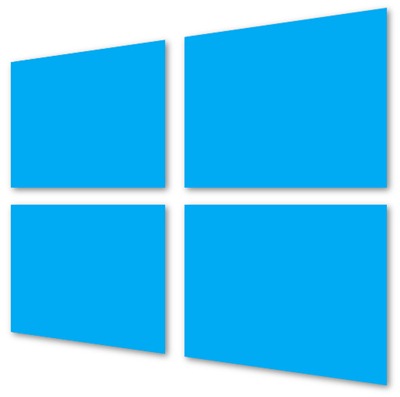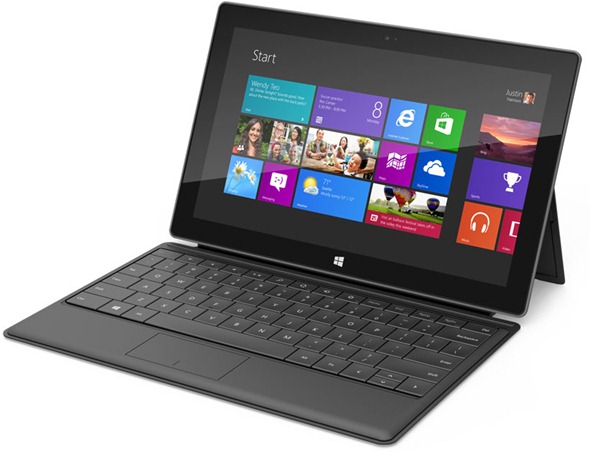| اخبار مایکروسافت در این تالار تمامی اخبار مربوط به غول بزرگ نرم افزاری دنیا مایکروسافت قرار خواهد گرفت |

02-15-2013
|
 |
مدیر بخش مکانیک - ویندوز و رفع اشکال   |
|
تاریخ عضویت: Sep 2009
نوشته ها: 2,586
سپاسها: : 5,427
6,159 سپاس در 1,794 نوشته ایشان در یکماه اخیر
|
|
 Next Version Of Windows
Next Version Of Windows
Next Version Of Windows To Be Called ‘Blue’ Instead Of Windows 9, Releasing Next Year? forum problem
Such is the manner in which technology moves nowadays, no sooner is one major release out of the way, do consumers, analysts and enthusiasts in general begin nattering about what’s up next. Windows 8 has been in our faces for the entire year, after Microsoft dropped the Developer Preview to the public in an unprecedented move, but despite not releasing for another two-and-a-half months, the successor to Windows 8 has already got chins wagging.
After Windows 7 and Windows 8 would come, naturally, Windows 9, but Mary Jo Foley – renowned as a very well-connected individual, thinks there may be something else in the pipeline. Sure, we should gearing ourselves up to dive in head-first with Windows 8, but there’s nothing wrong with speculating on what’s coming next, now is there
Foley suspects the next edition to be operating under the codename Windows ‘Blue,’ and although she offers little in the form of genuine detail, there’s enough there to make note of. Citing "a couple of contacts," an update is said to be arriving next year, although it’s not yet known whether Windows Blue is a feature-rich release of just un update filled with the usual array of bug fixes and general performance enhancements.
Even if it is just a service pack, Foley reckons it’ll be out in a year’s time, and although we’re led to believe Windows 8 is the finished article, it might be that the software maker is just getting started, building the OS through the next few years.
Still, having used the Release Preview build of Windows 8, I have to say it works fairly smoothly, but it’s not without its shortcomings. Therefore, if Microsoft does decide to release a series of bug fixed next year with this Windows Blue, it’ll probably also add a couple of nice new features along with it, in order to keep the people happy.
Of course, this is all merely speculation, and I’m sure we’ll learn more over the coming months. Windows 8 is set to release on 26th October, along with the ARM edition of the Microsoft Surface. Sandwiched in between the release of a new iPhone, maybe a new iPad, and a bunch of new Nexus devices (not to mention the Galaxy Note brand), the next few months are going to be a mix of the two options, features and fixes. Windows 8 isn’t perfect, as anyone who has used its RTM build can attest, but it does have much going for it – a hotfix some 9 months after its launch could smooth its issues and mature it to a point of completeness that might make it a palatable enterprise option
.
Either way, Windows Blue is likely something that we are going to hear quite a bit about in the coming months. Get ready for the Windows 8 tsunami, but keep in mind that it’s a single wave of a larger cycle.
You can follow us on Twitter, add us to your circle on Google+ or like our Facebook page to keep yourself updated on all the latest from Microsoft, Google, Apple and the Web.
|
|
کاربران زیر از bigbang به خاطر پست مفیدش تشکر کرده اند :
|
|
|
جای تبلیغات شما اینجا خالیست با ما تماس بگیرید
|
|

05-27-2013
|
 |
مدیر بخش مکانیک - ویندوز و رفع اشکال   |
|
تاریخ عضویت: Sep 2009
نوشته ها: 2,586
سپاسها: : 5,427
6,159 سپاس در 1,794 نوشته ایشان در یکماه اخیر
|
|
 Windows 9 release date, news and rumours
Windows 9 release date, news and rumours
Updated What do we know about the future of Windows
A Chinese site says this is the version number of Windows 9 Milestone 1
With Windows 8, Microsoft tried - not entirely successfully - to make tablets part of a continuum that goes from number-crunching workstations and high-end gaming rigs through all-in-one touchscreen media systems and thin-and light notebooks down to slender touch tablets, all with the same OS, aiming for the best of both of today's computing worlds. What will it do for the next version of Windows?
Despite rumours of an aggressive development and shipping schedule, there's no official word about what's in the next version of Windows, but there are plenty of rumours (many of them from Chinese enthusiast sites that claim to have leaked builds), plus more reliable information from job adverts for the Windows and Windows Phone teams.
There are also patents, which may or may not be relevant, and some rare comments from developers on the Windows team. Here's what we've heard about Windows 9 and what we think is happening.
Windows more often: Windows 9 and Windows Blue
Job adverts for Windows and Windows Phone and LinkedIn profiles for developers on the Windows Server team all refer to "Windows Blue" in relation to a future version of Windows, Windows Server and Windows Phone.
That's only a codename and it's a codename not for the specific versions of these operating systems but for the new development cadence, where Microsoft puts out new releases of Windows, Windows RT and Windows Server every year, the way it already does for Windows Phone.
The next version of Windows is being referred to by Microsoft people who post their details on LinkedIn as Windows 9; as usual, that will be a codename that might change.
While still just a codename, Windows 9 has also been referenced by Microsoft in a job posting, spotted by MSFT Kitchen on 13 March 2013. The ad, for a Bing Software Development Engineer, says that the team will be delivering products "in areas including Windows 9, IE11 services integration, touch friendly devices including iPad and more."
Screenshots claiming to show a leaked build show the kernel number as Windows 6.3; that just means that Microsoft is still being careful not to break applications that look for the Windows version number.
That's why Windows 7 was version 6.1 internally and Windows 8 is version 6.2; it doesn't mean this is 'only a service pack'. (What would normally have been Windows 8 SP1 was released through Windows Update before Windows 8 shipped in October 2012.)
Windows 9 release date
Microsoft communications chief Frank Shaw said Microsoft wasn't ready to talk about how often Windows might come out when we spoke to him in January, but he agreed "you have certainly seen across a variety of our products a cadence that looks like that; Windows Phone is a good for example of that, our services are a good example of that".
The rumours say Windows 9 will be finished in July or August 2013; that's a year after the RTM (release to manufacturing) of Windows 8. We don't know if it will be available to users straight away through Windows Update or if PC makers will get time to test and integrate updates for their systems (the RTM version could go on MSDN (Microsoft's Developer Network Platforms site) in July, giving hardware partners a month to test before release in August).
We also don't know if Windows 9 will be available as an upgrade from Windows 7 that you can buy as a standalone product or if you'll have to have Windows 8 to get the upgrade (which would explain new Windows business chief Tami Reller talking about "multiple selling seasons" for Windows 8, as well as rumours that Windows 9 will be either a free upgrade or part of an upgrade service you can subscribe to).
Microsoft seems to be on track; rumours say the first milestone, M1, was finished in mid February, putting the team halfway through the development cycle, with milestone 2, which may be released publicly as the Milestone Preview in a few months (perhaps May or June, to incorporate bug fixes in a July or August release).
Windows 9 features
To be competitive with iOS Windows RT has to get annual updates and it would make no sense not to release those updates to the WinRT runtime for Windows 8 as well, but the job ads say there's more to the next version of Windows than that with improvements to "the start screen; application lifecycle; windowing; and personalization… enhancing ease of use and the overall user experience".
Screenshots claimed to come from leaked builds show a new version of Internet Explorer, IE 11 (which isn't surprising - and might explain why IE 10 for Windows 7 has taken so long, if the IE team has been concentrating on this).
Other rumours say the Search charm will show results from multiple apps automatically, instead of waiting until you click another app in the list to see is search results. This would be more like the universal search in Windows 7 which showed results from Explorer, Outlook and other search providers in the same list of results.
Again, a Chinese site claims this is a leaked version of Windows 9 with IE 11 in Windows 9 to be cheaper, smaller, with more apps
In the last Microsoft earnings call CFO Peter Klein made it clear that Microsoft has got the message that Windows 8 tablets need to be cheaper; "we know that our growth depends on our ability to give customers the exciting hardware they want, at the price-points they demand."
One of the rumours about Windows Blue is that it will be optimized to run on 7" and 8" tablets - a form factor where Microsoft is losing out to Apple and Google right now.
That would explain rumours saying Windows 9 will improve "scaling"; if apps can be scaled down automatically, developers won't have to rewrite apps to run on different resolutions and screen sizes.
Another revealing Microsoft job advert talks about having Windows Phone and WinRT apps run on both Windows Phone and Windows. "Do you wish the code you write for Windows Store apps would just work on the Windows Phone and vice versa? If so, then this is the role for you! We are the team leading the charge to bring much of the WinRT API surface and the .NET Windows Store profile to the Phone."
That sounds like a longer term goal, given that the job advert was on the Microsoft Careers site at the beginning of February, and it's being driven by the Windows Phone team (we don't expect to see the next version of Windows Phone until the autumn), but it could give developers an incentive to write apps for the Windows Store and give Windows 9 users more to choose from. Scaling apps to fit different size screens would help here too.
Windows 9 power management
A recent Channel 9 video featuring Bruce Worthington, who leads the team working on Windows power management fundamentals, included some rather technical details about saving power in Windows and the improvement in Windows 8.
"If you look at the number of times we would wake up the CPU per second," he explained, "for Windows 7 you would typically see numbers on the order of one millisecond. We would literally be waking up the CPU a thousand times per second. If you look at Windows 8, on a clean system, we have numbers that are better than a hundred milliseconds. "
Now that Windows Phone 8 is based on the Windows Phone kernel, power management has to get better. "Now we're looking forward to the next release and we can get even farther - especially as we start interacting more and more with our phone brethren.
"They want us to be quiet for multiple seconds at a time. They even talk about minutes in some scenarios which is pretty far afield for us, to be thinking about minutes of being completely quiet. At least getting into the multi-second we're definitely ready to think about that."
Especially with Haswell bringing Connected Standby to Core systems, not just low-power Atom tablets, saving power looks like a priority for Windows 9 (especially if it comes out at the same time as Intel's new chips.
"For the next release there's all kinds of things we've already identified that are going be quite challenging but at the same time the user is going to get a tremendous boost forward," Worthington promised.
Windows 9 gestures and experiences
There are features we predicted for Windows 8 based on Microsoft patents and technologies we've seen demonstrated by Microsoft leaders like CTO Craig Mundie that didn't make it into the OS. There are features Microsoft plans for every version of Windows that get cut to ship on time; sometimes they reappear, sometimes they don't.
Kinect-based 3D gestures might be on the cards this time around, especially as we hear that some notebooks will soon get 3D cameras - although from other suppliers rather than Microsoft.
Using two cheap webcams rather than an expensive 3D camera could make gesture recognition hardware cheap enough for laptops and then you could wave at the screen from a distance.
And maybe Direct Experience will arrive in Windows 9. The patent explains this as a way of starting Windows to play media files in a special purpose operating system and there are improvements in Hyper-V for Windows Server 8 that Microsoft could use to make Windows 9 work better for this, like being able to move a virtual machine from one place to another while it's running.
Maybe that would even work with the next version of the Xbox - which will be based on the Windows kernel and is expected to ship in the autumn.
Direct Experience would start up a media version of Windows if you booted with a USB stick of music files plugged inOne obvious question is whether Windows 9 will be 64-bit only - something that Microsoft threatened even before Windows 7 shipped - but that's going to depend on what chips are in PCs.
ARM is 32-bit now and even when 64-bit ARM chips come along Microsoft may want compatibility with Windows 8 and 9 tablets. And although Intel is talking about 64-bit Atom systems, if Atom Windows 8 tablets have sold well, Windows 9 will need to support them.
|
|
کاربران زیر از bigbang به خاطر پست مفیدش تشکر کرده اند :
|
|
|
کاربران در حال دیدن موضوع: 1 نفر (0 عضو و 1 مهمان)
|
|
|
| ابزارهای موضوع |
|
|
| نحوه نمایش |
 حالت خطی حالت خطی
|
 مجوز های ارسال و ویرایش
مجوز های ارسال و ویرایش
|
شما نمیتوانید موضوع جدیدی ارسال کنید
شما امکان ارسال پاسخ را ندارید
شما نمیتوانید فایل پیوست در پست خود ضمیمه کنید
شما نمیتوانید پست های خود را ویرایش کنید
اچ تی ام ال غیر فعال می باشد
|
|
|
اکنون ساعت 11:47 PM برپایه ساعت جهانی (GMT - گرینویچ) +3.5 می باشد.
|

















 حالت خطی
حالت خطی

